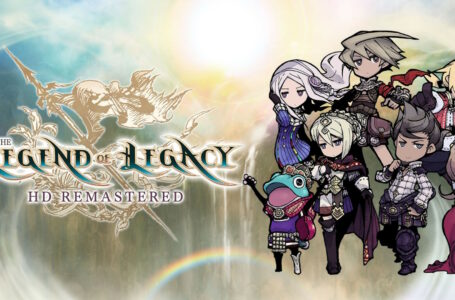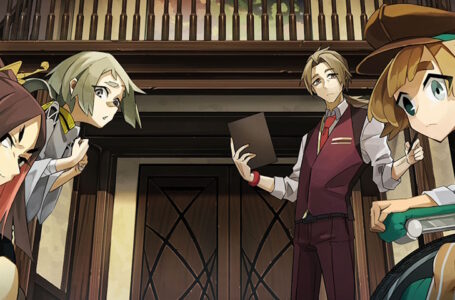I bet you didn’t play Mad Rat Dead
One of the things I’ve always respected about Nippon Ichi Software is the fact that they’re always willing to try new, experimental and downright weird things — even if they suspect relatively few people will ever play them.
Probably the most consistent source of these overlooked gems is Yu Mizokami who, to date, has brought us the Yomawari series of horror games and the excellent (and criminally underappreciated) Lapis x Labyrinth — you better believe we’re going to have to have words about that one soon, too. Most recently, he gave us Mad Rat Dead on Nintendo Switch and PlayStation 4, a game which very few people spent any time talking about online whatsoever. So I think it’s high time we corrected that!
If you’ve still got a PS3, time’s running out to pick up a couple of Nippon Ichi’s forgotten gems!
Mad Rat Dead is one of Mizokami’s most interesting games, since it blends two seemingly disparate genres with one another to create a rhythmic platform game. If you’re picturing a platform game where you move like in Crypt of the Necrodancer, you’re not far off the truth, with a few twists here and there.
But let’s consider the game’s main narrative concept first, because it’s core to the whole experience. You take on the role of a nameless rat, who is subsequently referred to as both “Little Rat” and “Mad Rat” according to who is speaking to him, and as the game opens you witness him being dissected by a faceless scientist — a procedure which, unsurprisingly, results in the rat’s death. While this is going on, the game asks you (as in you, the player) a series of surprisingly personal, philosophical questions, the relevance of which is not immediately apparent.
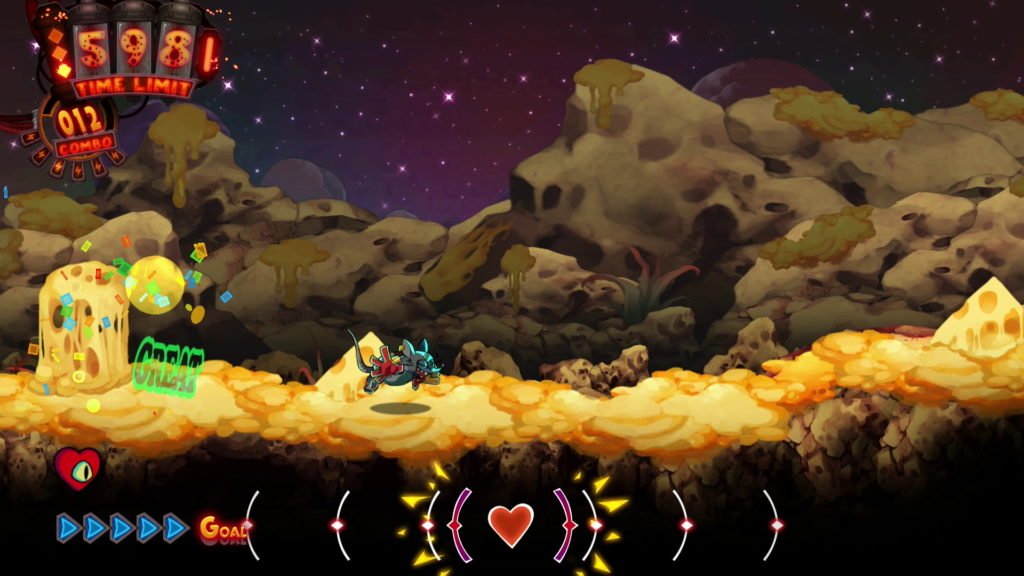
Death is, of course, not the end for our unfortunate rodent friend. Encountering someone claiming to be the “Rat God” in what he assumes to be the afterlife, Mad Rat (as we shall refer to him hereafter) is presented with an opportunity: relive his final day as he sees fit, on the condition that he will still die at the end of it. In other words, he’s being given the opportunity to die in a manner of his choosing, rather than in the undignified way in which we see him pass in the game’s introduction.
What then follows is a very personal journey for Mad Rat, in which he attempts to come to terms with his own feelings towards the scientist who killed him, and his attitude towards life, death and humanity in general. The game takes you through a series of environments and punctuates each level with narrative sequences; along the way, Mad Rat is presented with a series of situations that challenge his own preconceptions and… well, you’ll have to play it all the way through to find out what the final result on his own outlook is.
Mechanically, Mad Rat Dead is all about moving to the beat of the music. Unlike other rhythmic games such as the aforementioned Crypt of the Necrodancer, you can actually move freely — albeit very slowly — just by using the directional controls, but your main means of propelling Mad Rat forwards is tapping a button on your controller to make him dash. The button by itself will result in a short dash; combining it with a direction will extend its length somewhat.
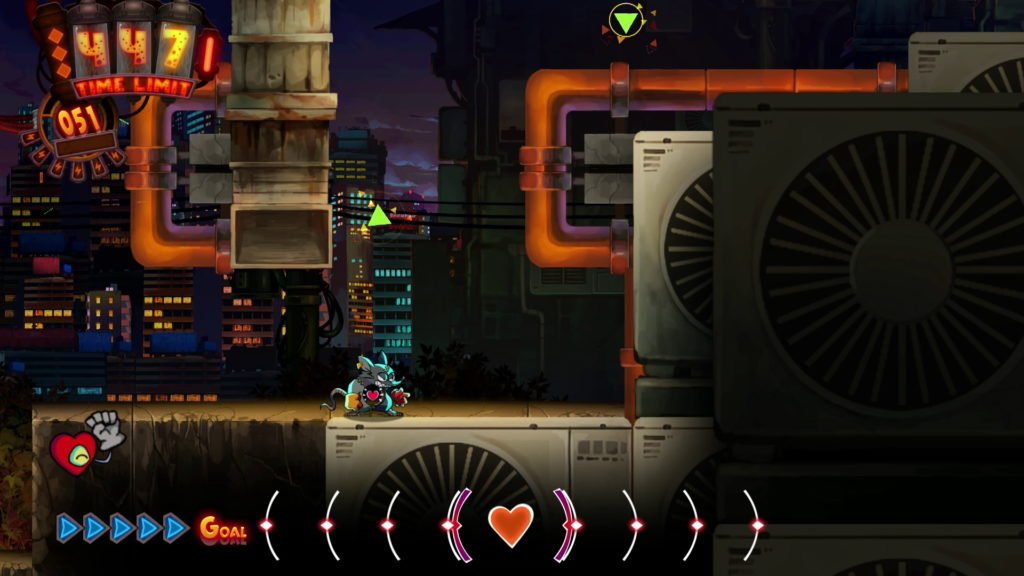
The twist is, of course, that you have to do this in time with the music — and the same is true for Mad Rat’s other controls, including jumping, double-jumping, wall-jumping, fast-falling and locking on to enemies to attack them. Failure to hit the beat will result in the move simply not going off; you’ll quickly need to get used to doing things rhythmically, though the game is fairly forgiving so long as timing is concerned.
There’s a slight learning curve to Mad Rat Dead’s seemingly simple mechanics, particularly with regard to the lock-on attack. Specifically, said attack takes the place of your double-jump, so if you’ve already jumped twice you won’t be able to lock on to, attack and bounce off an enemy. This is a problem, because there are numerous stages throughout the game where arrangements of enemies are used for traversal rather than obstacles — so you’d better figure out a way to reach them safely in order to proceed.
The upshot of the mechanics combined with the level designs and the necessity to stay on the beat is that you end up looking at the landscapes you explore less as traditional platform levels, and more as sort of musical scores. You’ll know that narrow, vertical passages will require a sequence of wall-jumps, for example, perhaps followed by a few dashes; the ultimate aim is, of course, to be able to chain an entire level together into one continuous dance without any breaks — and naturally, there is a combo scoring system on hand to encourage you to do just that.
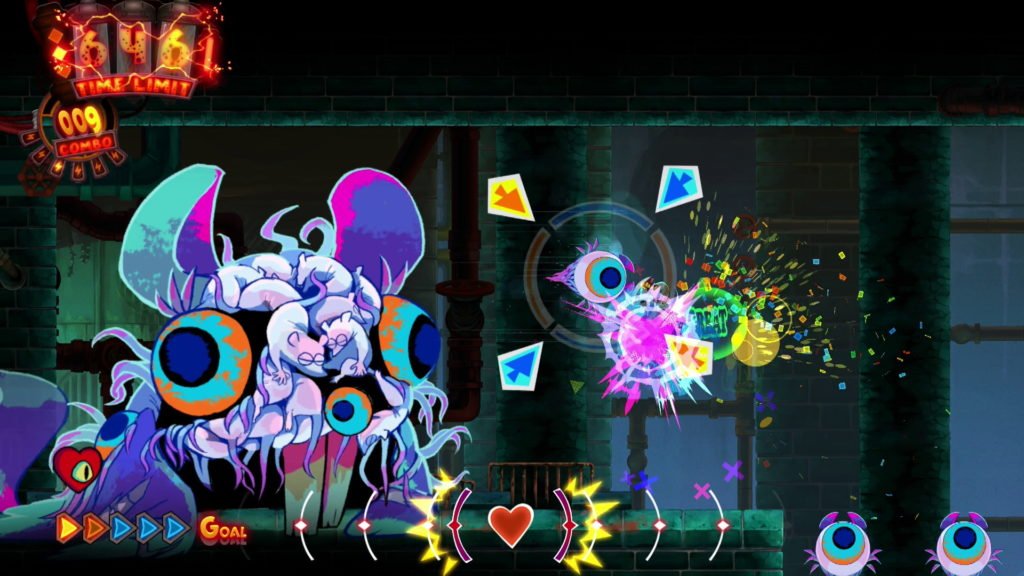
On top of that, “dying” in a level isn’t the end; time simply freezes, allowing you to rewind a few seconds to a convenient moment before trying again. This, as you might expect, breaks the flow of the music and overall gameplay quite significantly, so there’s another incentive for you to get to grips with the rhythmic gameplay: to be able to enjoy the music without breaks.
And you’ll want to do just that; Mad Rat Dead’s soundtrack is absolutely fantastic, covering a wide variety of genres including joyful electro-swing, tracks inspired by traditional Asian music and some seriously aggressive techno numbers towards the narrative’s climax. A number of different composers worked on the game’s soundtrack as a whole, and as the game proceeds you’ll get a feel for each musician’s particular style — and how that will make the coming levels scored by them feel to play.
Narratively, Mad Rat Dead is fascinating. While explaining too much will give away some of the most interesting things about the story as a whole, suffice to say for now that this is a game that makes excellent use of the “unreliable narrator” trope. In this instance, Mad Rat is a participant narrator, and we’re supposedly seeing things as he sees them as well as getting a feel for how he is understanding the things that are presented to him.
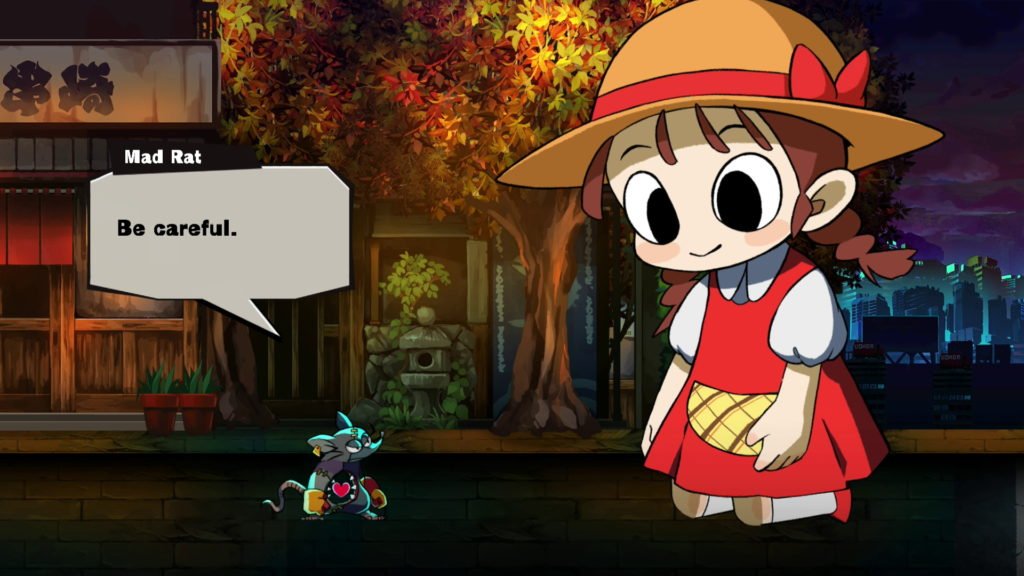
Over the course of its complete narrative, Mad Rat Dead raises questions of hard-coded prejudices, making critical decisions in the heat of the moment and, as you might expect, differing attitudes towards the concept of mortality. And yes, those probing questions at the start do indeed become relevant later.
Mad Rat Dead is a prime example of Nippon Ichi doing what it does best between Disgaea titles: putting out weird games that about five people will play, but then those five people will happily talk enthusiastically about those games to anyone who will listen.
So long as that’s enough for them to keep making these delightfully peculiar and memorable games, I’ll gladly continue to be part of that elite five. And if you’re yet to explore what “B-tier Nippon Ichi” has to offer, Mad Rat Dead is as good a place as any to start.
Join The Discussion
Rice Digital Discord
Rice Digital Twitter
Rice Digital Facebook
Or write us a letter for the Rice Digital Friday Letters Page by clicking here!
Disclosure: Some links in this article may be affiliate links, which means we may earn a small commission if you make a purchase after clicking on them. This is at no additional cost to you and helps support Rice Digital!
- Letter from the Editor: passing the torch - June 30, 2023
- Super Woden GP 2 is looking promising - June 30, 2023
- Inti Creates is making a 32 bit-style Love Live action platformer - June 26, 2023




